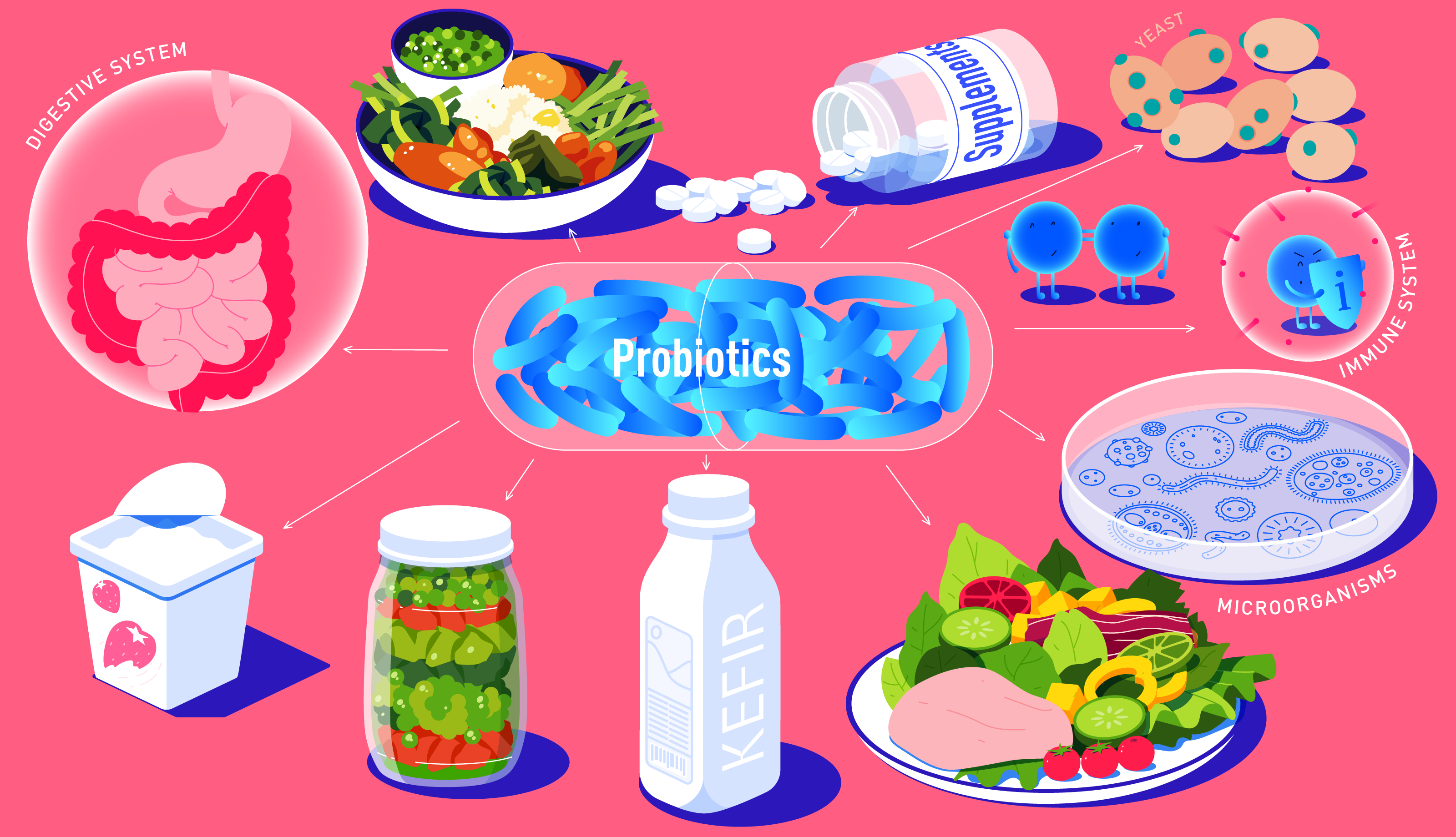Though the research is developing, numerous studies suggest that sourdough fermentation can improve the nutritional properties of bread. Discover how lactic acid bacteria change the structure of sourdough, potentially improving digestibility and nutritiousness.
Sourdough fermentation date’s back to ancient Egypt and was the norm in breadmaking until the Industrial Revolution. Due to increased demand, manufacturers opted for quicker, more scaleable bread-making techniques.
To this end, fast-rising baker's yeast became the norm, displacing the old fashioned method of long fermentation. In recent years, sourdough has risen to popularity, partly due to its superior taste but also driven by emerging evidence that sourdough is nutritionally superior to other bread types.
- What is sourdough?
- Sourdough and mineral bioavailability
- Sourdough and resistant starch levels
- Glycemic-index and blood sugar levels
- Sourdough, digestibility and IBS
- Is sourdough gluten-free?
- Sourdough or sourfaux?
- A final word
What is sourdough?
Sourdough is naturally leavened bread, meaning it doesn't rely on commercial yeast to help it rise. Instead, sourdough is leavened using a “starter” containing “good bacteria”- namely lactobacillus- and wild yeast.
Moreover, emerging evidence suggests that the fermentation process changes the structure of bread and improves its nutritional profile.
In short, by feeding on the dough, microorganisms in the starter potentially reduce phytate, fructans, and gluten levels. As a result, they may be able to increase the nutritiousness and digestibility of bread.
Without further ado, let’s explore some potential health benefits of sourdough bread over other cereal products.
☝Eating history☝ Seamus Blackley, the inventor of Xbox, harvested 4500-year-old yeast extract from an ancient Egyptian pot. Using this extract, he baked his own loaf of Sourdough bread and documented the affair on social media
Sourdough and mineral bioavailability
Whole-grain bread is rich in minerals such as calcium and zinc, though it also contains high levels of an “anti-nutrient” called phytic acid.
During digestion, phytic acid binds with essential nutrients and prevents their absorption in the small intestine. As a result, many health-giving compounds cannot be used by the body.
In particular, phytic acid can hinder us from accessing minerals such as magnesium and iron. As it turns out, lactic acid bacteria in sourdough can break down this anti-nutrient during fermentation.
In one study, the lactic acid in sourdough bread broke down the phytic acid content to 70% of its original levels. This process means that important minerals and nutrients are made bioavailable, potentially making the bread more nutritious.
Likewise, animal studies have shown that sourdough fermentation can increase the bioavailability of essential minerals, including iron, magnesium and zinc.
Sourdough fermentation and resistant starch levels
Resistant starches are a complex type of carbohydrate. Unlike other carbs, they are not broken down or absorbed in the small intestine but travel undigested to the colon.
Once there, they are fermented by the trillions of bacteria that reside in our gut, collectively known as the microbiome.
Far from being a useless byproduct of fermentation, butyrate reinforces the gut lining, encourages mucus production, and protects against inflammation in the digestive tract.
Interestingly, one study found sourdough bread to have higher resistant starch levels than refined wheat bread by up to 6%. Similarly, a Swiss team of researchers increased the RS content of sourdough bread made with legume kernels up to threefold.
Resistant starch is prebiotic, meaning it feeds beneficial bacteria in the gut. By extension, this leads to an increase in butyrate along with its anti-cancer and anti-inflammatory benefits!
Sourdough and blood sugar levels
GI stands for Glycemic Index (GI), which is a measure to determine how quickly your body breaks down carbohydrates into glucose. Glycemic load (GL) measures how much glucose per serving it can deliver.
For example, watermelon has a glycemic index of 80, but a small glycemic load of just 5.
As we all know, bread is a carbohydrate, but some people aren't aware that carbohydrates are sugar molecules. When we digest carbs, our enzymes break them down into glucose. If you have ever held bread in your mouth and it began to taste sweet, this is why.
If food is low GI, it takes your body longer to metabolise the carbohydrate, resulting in a gradual rise in blood sugar levels. As a result, low-GI foods can help you regulate blood sugar levels and avoid spikes in glucose.
Multiple studies have demonstrated sourdough to have a lower glycemic index than other bread. For example, one study found that a 30g serving of sourdough wheat bread had a low glycemic index of 53.
In comparison, wheat bread leavened with baker’s yeast was shown to have a high GI score of around 71.
Likewise, a Canadian study, led by Terry Graham found that blood sugar levels in overweight men showed a smaller spike after eating sourdough when compared with yeasted bread. In other words, that sourdough has a low glycemic load.
In an attempt to engineer low-GI bread, Swiss researchers baked five different loaves of bread with two different types of grain.
The GI index of the five prototypes was between 56 and 68, all of which are classed as medium GI. For reference, anything below 55 is considered low. With that said, all the loaves of bread were low GL.
Over time, eating many high GI or GL foods may lead to an increased risk of type-2 diabetes and obesity due to insulin resistance. In the short term, blood sugar spikes can lead to fatigue and mood swings.
Sourdough, digestibility and IBS
When bacteria ferment fibre in our gut, they release gas as a byproduct. As we discussed earlier, the bacterial “starter” used to make sourdough feeds on the dough during the bread-making process.
According to researchers at Monash University, the sourdough fermentation process might reduce the levels of fructans in bread, a type of resistant carbohydrate known to trigger IBS symptoms.

Some types of sourdough, namely spelt and oat, have been labelled low-FODMAP on the Monash University health app. FODMAP stands for fermentable oligo-, di- and mono-saccharides, and polyols and are a group of compounds known to be resistant to digestion that can exacerbate IBS.
Whilst promising, not all sourdough bread will be low FODMAP, with variables such as fermentation time, added ingredients and type of flour influencing the nutritional profile.
Moroeover, at least one study has found that sourdough wheat bread was not tolerated any better than yeast-fermented bread, even though sourdough reduced was shown to reduce FODMAP levels.
Is sourdough bread gluten-free?

Unless you use gluten-free grains, sourdough bread is not gluten-free.
Whilst sourdough fermentation can potentially reduce the gluten content of bread, the process does not reduce the levels enough to be classified as a gluten-free product.
With this in mind, those with coeliac disease and gluten intolerance should not eat regular sourdough under any circumstances.
Whilst regular sourdough (made with gluten-containing grain) is not gluten-free, you can bake your own sourdough using gluten-free grains such as sorghum or buckwheat.
Research suggests that sourdough fermentation can enhance the nutritional properties of gluten-free bread as much as glutenous cereal products.
In another study, sourdough fermentation was shown to increase free amino acids in a sorghum biscuit, increasing the antioxidant property of the end product.
Considering a gluten-free diet has been cited as increasing the risk of certain mineral deficiencies, this is particularly promising.
Sourdough or sourfaux?

Many of the benefits seen in sourdough stem from long, slow fermentation, yet there is no legal definition outlining what qualifies as “sourdough” in the UK.
With this in mind, you should never assume that all “sourdough” products will boast the same health benefits.
In a study conducted by Which? Magazine, only four out of nineteen sampled commercial loaves were deemed traditional sourdough.
The remaining fifteen were labelled “sourfaux” and contained additions such as vinegar, yeast and ascorbic acid (E300).
While these ingredients aren’t necessarily harmful to your health, they aren't present in traditional sourdough, made with water, salt, flour and a sourdough starter.
These ingredients also imply that corners were cut in the production process, likely minimising fermentation length.
Not only can this influence the taste of the bread, but it can also affect the nutritional quality of a loaf, including its digestibility and nutritiousness.
When buying sourdough bread, keep an eye out for these added ingredients. Ultimately, the best way to ensure your sourdough is the real deal is to make it yourself! That way, you can control the length of fermentation and which ingredients are present in your loaf.
A final word
Sourdough dates back to the Ancient Egyptians and was the predominant breadmaking method for centuries.
Emerging research suggests that the unique sourdough process, involving wild yeast, lactic acid bacteria and long fermentation, confer unique health benefits to sourdough bread.
Whilst large scale clinical studies are lacking, research suggests that sourdough preparation can improve the nutritiousness and digestibility of bread.
Many of these benefits are thought to derive from live bacteria in the sourdough starter, which breakdown fructans, phytate acid and gluten.
☝️DISCLAIMER☝This article is for informational purposes only. It is not intended to constitute or be a substitute for professional medical advice, diagnosis, or treatment.




















